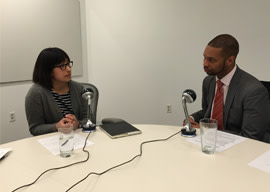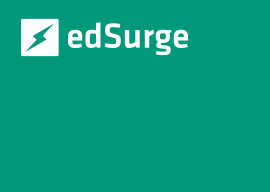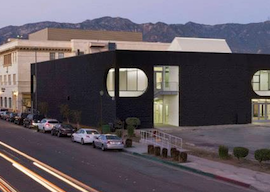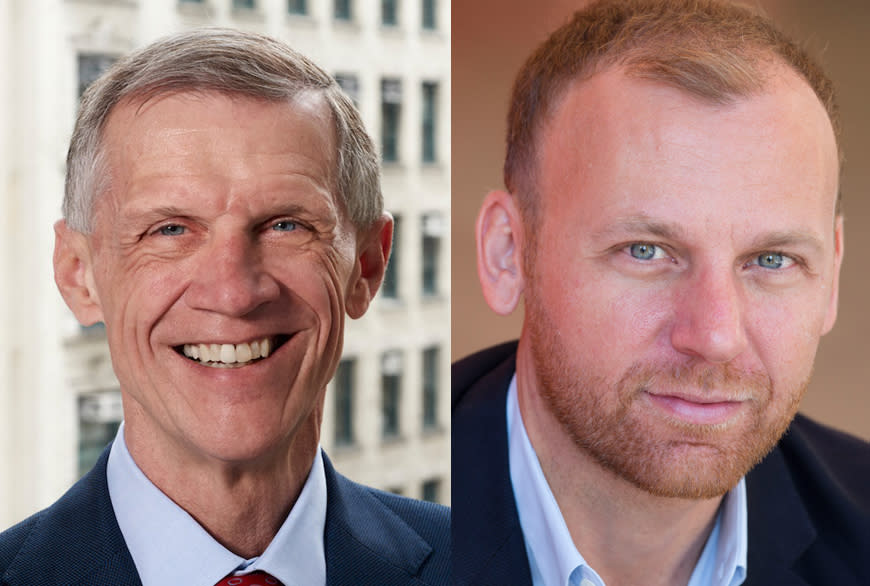
Higher education is becoming an increasingly global affair. And design crosses borders. Easily. The question is: Where do education and design overlap? How might they work together? And what does their relationship mean for the pedagogical future and the future of work? Back in April, David E. Van Zandt, President of The New School, and Burak Camak, Dean of the Parsons School of Fashion, visited our studio in Seoul, Korea, and we got into a lively conversation with these two important educational leaders. Scroll down below to read edited selections of this smart conversation.
Continuum: David: you’ve been the president of the New School since 2010. What do you see for the future? Will universities be around 10 years from now?
Van Zandt: Let me tell you a little bit about the New School, because it’s more than just Parsons. Parsons joined the New School in the 1970s, and today Parsons makes up 60 percent—about 1,000 students—of the New School. What we’re trying to do is to put two ideas, design and social sciences, together. These days, universities with strong social science programs notice the importance of design thinking, and try to implement it into their curriculum.
We seek students with lots of creative talent who want to use it to make the world a better place. We’ve actually done segmentation in the marketplace, and we’ve been able to identify prospects, through social media in various ways, and are directly targeting that group. We’re focused on the particular individuals, not standard students. We come at it a little differently than other schools. We start with very creative people and try to broaden them, particularly through understanding human behavior. Again, this is something you just can’t get anyplace else. So that’s truly our strategy. We believe that design is about the organization of people, environments, and objects to make the world a better place. It is a very human-centered kind of education.
These days, universities with strong social science programs notice the importance of design thinking, and try to implement it into their curriculum.
So will universities be around in 10 years? I hope so, and I’m pretty sure they will be because of the economic changes we’re always talking about. I think students coming out with our broad Parsons education behind them, with creative focused skills, will be better off than others, in the long term.
Cakmak: Thinking about the future of work is critical in terms of defining what student needs will be and how to shape our education programs. Future skills, and the means of acquiring them, may well shift over time. Universities must be flexible to adapt properly to external environmental changes.
The other thing that has been quite critical: expanding the thinking around where education begins and ends. We try to engage before students come in, to understand their interests and to motivate them for a period in which they’ll be with us. We also look at what’s going to happen after graduation and try to prolong connections, to create a supportive ecosystem. During that time, we are intensely engaging, opening doors into the real world, as Continuum does, by going out into the field. Our students’ experiences are oriented toward case studies, model shops, and real-life experiences, rather than just studying textbooks.
In addition, we use our network and systematically bring in as many partners as we can. When it comes to fashion design, I start with material suppliers, manufacturers, retailers, and go all the way to the brand. Historically speaking, the curriculum was just about brands at the level of engagement, but students didn't get a deep inside knowledge of what happened in the whole value chain. I care very much about providing understanding of the value chain, and encouraging designers to question that chain.
I care very much about providing understanding of the value chain, and encouraging designers to question that chain.
As a matter of fact, our students love to ask tough questions. “How do I change the system?” they ask, rather than, “How do I create another product?” There are a couple of ways we get them to this level. First: we establish partnerships, to bring different parties together, such as Intel, MasterCard, Google, and P&G. Then, employing these partnerships, we provide reality-based projects, and students are able to explore them in multidisciplinary teams. We are trying to bring social change with some of these partnerships. For instance, we’re working with UNFP to design and manufacture high-functioning absorbent pads for women in Africa.
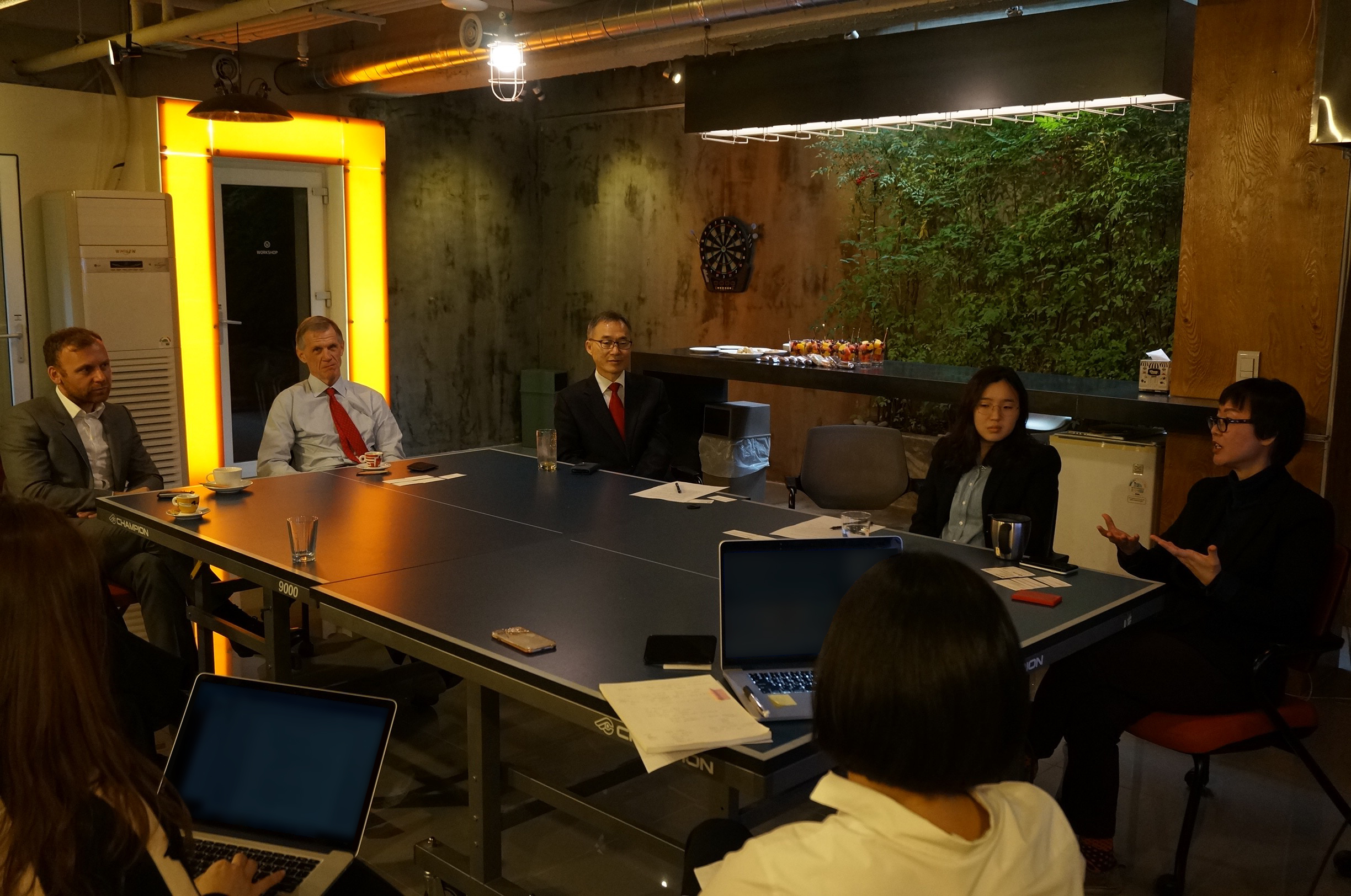
We’re also trying to diversify fashion designers’ pathways. Letting students know that there are many career options. It’s not all about designing collections and becoming a star designer. Students learn that they can work in: (1) fashion products; (2) materiality; (3) systems and society. For example, student Angela Luna’s graduation collection focused on designing for refugees; it successfully brought awareness of immigrant issues to the public, through design dialogue.
Continuum: How do you recruit students?
Cakmak: Portfolios can reveal certain talents, but critical thinking is the most important element we look for during portfolio reviews. If they are able to pose bold questions and demonstrate a robust thinking processes, we know that we can shape them through our four-year journey. Ultimately, our curriculum plays a key role in shaping whom they become. We just need to ensure that they are open-minded and are able to think in a broad manner.
We’re trying to diversify fashion designers’ pathways. Letting students know that there are many career options. It’s not all about designing collections and becoming a star designer.
Continuum: What role do you think universities should play in society? A long time ago, the university was a place where you could accumulate knowledge. Then it became a place where you prepare yourself to get a good job. What’s next?
Van Zandt: I think that universities help create the infrastructure of modern society. By their nature, they are, in many different ways, producing public servants. I’m not worried that universities are losing their relevance or not contributing to society.
Cakmak: So many industries are interested in getting into the business of education. But the reality is not the same experience as with a university experience. Are you seeing new models arising in Korea in higher education?
Continuum: Korean education moves really slowly. The main problem is a shortage of budget, because there’s “half tuition” policy in Korea. Universities just don’t have money to try new things for the future.
Cakmak: Since basic skills can be learned through online learning platforms, traditional industry jobs are not needed to get trained in a university. However, under the Fourth Industrial Revolution, it is very important to push forward for new ways of thinking so people can create more flexible solutions. Also, human networks that students gain access to are promising them a better life. Universities still create high levels of engagement, which online learning platforms are striving to emulate.
Continuum: We’re looking forward to seeing the shape blended learning will take. In the meantime, thank you both very much for this stimulating conversation.

